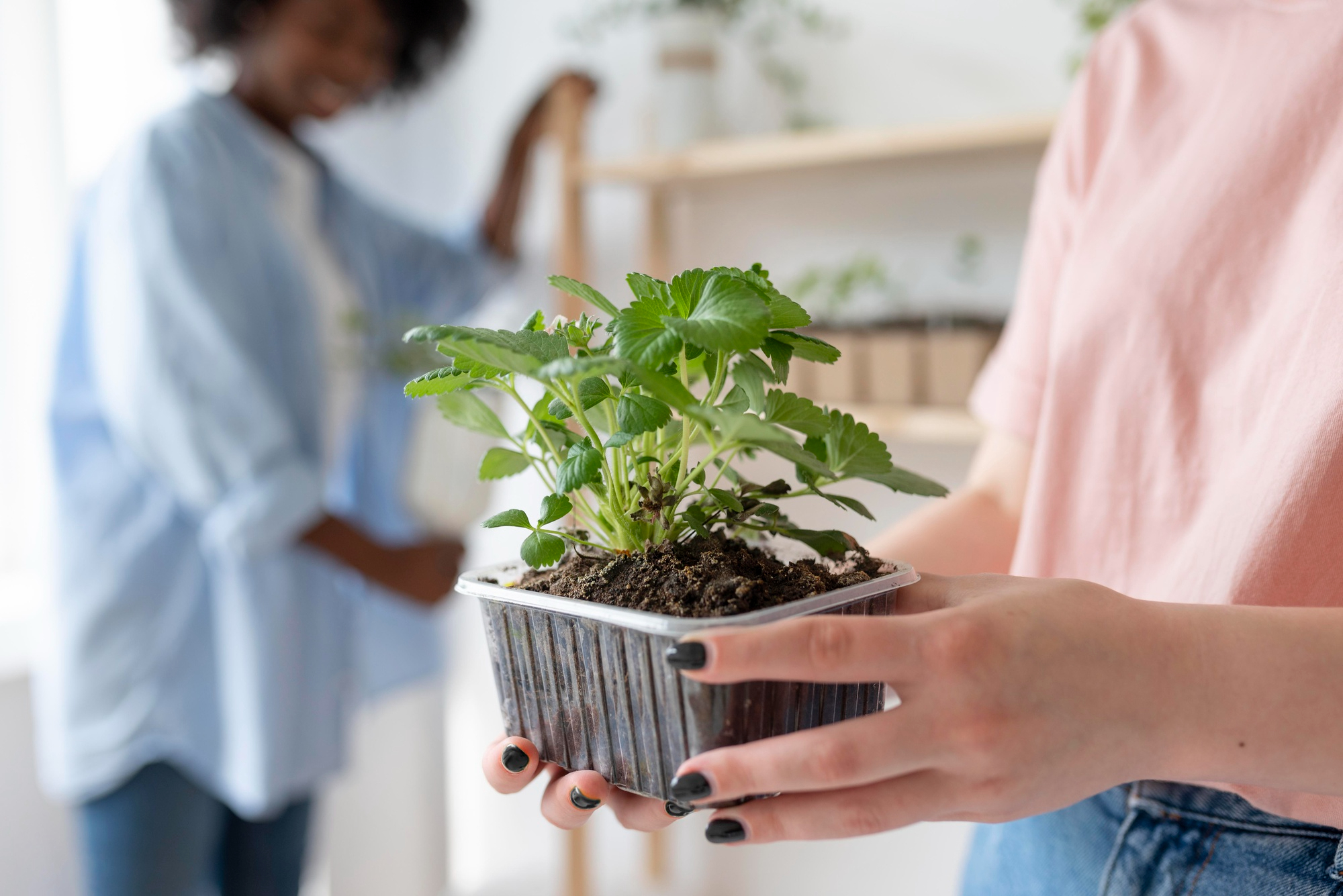Gardening can feel like a solo gig, but it's actually a team sport. Plants are social creatures that thrive in company, interacting with their neighbors in ways that either boost or hinder their growth. This dynamic is at the heart of companion planting, a savvy strategy that capitalizes on beneficial plant relationships.
The Dos: Friendships that Flourish
Just like friends, some plants have a unique ability to thrive when planted together. Discover the perfect plant combinations that create harmonious and beneficial relationships in your garden.
Let's explore the dos of plant friendships in this companion planting guide!
Marigolds and Just About Everybody: These vibrant, hardy flowers are the social butterflies of the plant world. With their cheerful blooms and strong scent, marigolds attract beneficial insects like ladybugs and lacewings, which help control pests in the garden.
Additionally, marigolds have been found to repel nematodes, a type of soil-dwelling pest that can damage plant roots. Marigolds make fantastic companions for a wide variety of vegetables, providing both beauty and natural pest control.
Tomatoes and Basil: These best buddies do well side by side in the garden. Not only does basil help repel insects that love feasting on tomatoes, but it also adds a delightful aroma and flavor to tomato dishes.
The lush foliage of tomatoes provides the perfect shade basil needs to thrive, creating a harmonious and mutually beneficial relationship between these two plants. Together, they make a beautiful and fruitful partnership in the garden.
Beans and Corn: In a fascinating symbiotic relationship, beans play a crucial role in enriching the soil by fixing nitrogen, thereby providing this essential nutrient for the growth of corn.
As a reciprocal gesture, the towering cornstalks serve as a natural trellis, offering support and allowing the delicate bean vines to gracefully ascend and thrive. This remarkable interaction showcases the harmony and interconnectedness of nature's intricate tapestry.
The Don'ts: Relationships to Rethink
When it comes to plants, some pairings just don't work well together. Avoid these plant combinations to ensure a thriving and harmonious community garden.
Potatoes and Carrots: They make a hearty stew together but are not great garden-mates. Both are susceptible to the same pest, the carrot fly, and can increase each other's chances of infestation. The carrot fly is a small, dark-colored insect that lays its eggs near the base of carrot plants. The larvae then burrow into the roots, causing damage and rot.
Unfortunately, potatoes can attract carrot flies due to their similar scent and foliage, making it easier for the pests to locate and infest the carrots. Therefore, keeping potatoes and carrots separate in the garden is recommended to minimize the risk of infestation and ensure healthy growth for both crops.
Beans and Onions: These two have a strained relationship. Onions release compounds that hinder the growth of beans, resulting in an unproductive partnership. When planted nearby, the root system of onions emits substances that impede beans' development and yield potential.
This interaction showcases the intricate dynamics present in gardening, where understanding the compatibility and interactions between different plants is vital for successful cultivation.
Cabbage and Tomatoes: Cabbage, a member of the brassica family, can throw shade on your tomato plants by hogging all the nutrients. These competitive growers leave the poor tomatoes struggling to produce buds and bear fruit, leading to a disappointing harvest.
Planting these two together also inadvertently creates an all-you-can-eat buffet that attracts these unwanted visitors. The cabbage moth caterpillars happily feast on the tender leaves, causing damage and frustration for gardeners.
Tips for Maintaining Companion Plant Combinations
To ensure the success of your companion plant combinations, here are some essential tips to keep in mind:
- Soil Preparation: Prepare the soil adequately by amending it with organic matter and ensuring proper drainage for optimal plant health.
- Watering Requirements: Be mindful of the watering needs of each plant in the combination. Avoid overwatering or underwatering, as it can affect their growth and health.
- Pest Control Tips: While companion planting helps deter pests, it's essential to remain vigilant. Monitor your garden regularly for signs of pests and take appropriate measures to control them if necessary.
- Harvesting Suggestions: Plan your harvests strategically to ensure you make the most of your garden space. Harvest crops at the appropriate times to avoid overcrowding and competition.
Expanding on Companion Planting
While the concept of companion planting has been around for centuries, it's important to note that not all combinations work well together. A little research can go a long way in determining which plants make good companions and which do not.
Some plants may have beneficial effects on one another, while others may have negative interactions. It's essential to consider factors like soil type, sunlight requirements, and pest vulnerabilities when planning out your garden layout.
Additionally, it's essential to rotate your crops every season to prevent nutrient depletion and reduce the risk of diseases. This practice also helps break the life cycles of pests that may have infested a specific crop in the previous season.
Another aspect to keep in mind is that companion planting is not a one-size-fits-all solution. Different regions and climates may have different plant interactions, so it's crucial to observe and adapt your garden accordingly.
Lastly, don't be afraid to experiment! Companion planting is all about finding the perfect balance and harmony between plants. So get creative and see what works best in your community garden!
Final Thoughts
As the saying goes, "Many hands make light work," and this couldn't be truer for community gardens. These shared spaces bring people together and provide an opportunity to learn and grow from one another. So, while companion planting is a helpful tool in creating a thriving garden, the sense of community and collaboration truly makes these gardens special.
